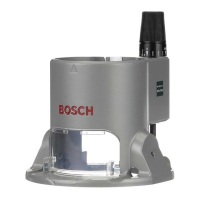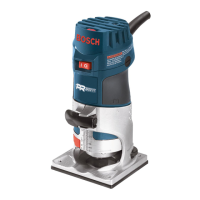14/263 Bosch Rexroth AG | Tightening Technology 3 608 870 A47
Nexo cordless Wi-Fi nutrunnero | 3 608 870 A47/2017-
1.4.4 Abbreviations
This documentation uses the following abbreviations:
Monitoring function The monitoring function keeps track that the upper and lower limits are complied with during the tight-
ening process by checking a monitoring parameter (e.g. gradient).
If the monitoring function has switching capabilities, the tightening step will be terminated immediately
if a limit is exceeded. If it is has no switching capabilities, the step result changes to NOK, even if the
target parameter has been reached.
Monitoring parameter The monitoring parameter is the measured quality (e.g. gradient) of a tightening step that must be kept
within specific limits in order for a tightening process to be performed safely. If the limits are violated,
the tightening step may be terminated.
Angle correction The angle correction is an additional parameter to measure the angle of turn. Since the angle of turn
is never measured directly on a bolt, but above the output drive, there is a small deviation between the
measured angle and the angle on the bolt as a result of the torsion of the output drive due to the
torque. This deviation can be avoided with an angle correction at the end of the tightening process
(never during tightening!). The angle value measured at the end of tightening after falling below the
torque threshold is then used as the target or last monitoring parameter (the torsion of the output drive
has then reset itself).
Target function The target function controls the process sequence of the tightening step by monitoring the target pa-
rameter (e.g. torque) and ends the step once the parameter has reached its target value.
Target parameter The target parameter is the measured variable (e.g. torque) of a tightening step, which must reach a
specific value (target value) for a tightening process to be performed successfully. The tightening step
is terminated once the target value has been reached.
Additional function The additional function defines further parameters for the tightening step. Although they have an effect
on the tightening process (e.g. start-up suppression, speed setting), additional functions cannot inter-
rupt it. They do not carry out an OK/NOK evaluation.
Additional parameters Additional parameters are parameters of a tightening step which cannot interrupt the tightening pro-
cess (e.g. target speed, torque threshold) although they have an effect on it.
Table 1–3: Abbreviations for the components of the Nexo cordless Wi-Fi nutrunner
Abbreviation Explanation
BT356 Subrack system 350 for max. 6 tightening channels
BS350 Operating System 350
CS Compact System
ES ErgoSpin hand-held nutrunner
HMI Human-machine interface
IL Integrated logic
KE350 System 350 communication unit without DVI interface
KE350G-IL System 350 communication unit with DVI interface and integrated logic
LT35x Size-dependent servo amplifiers for System 350 stationary tightening technology
LTS350D Servo amplifier for tightening spindle
LTU350/1 Servo amplifier for System 350 ErgoSpin
LTE350D Servo amplifier for System 350 ErgoSpin
MC/DMC Measurement transducer
NK350 System 350 network coupler
NK350S System 350 network coupler with external power supply
NXA Nexo right-angle nutrunner

